-
Posts
645 -
Joined
-
Last visited
Content Type
Profiles
Forums
Gallery
Events
Posts posted by hornet
-
-
Even if someone posts you a pic of the hull you are not going to get a true sense of the colour. Model shipways is quite correct when they say that colours vary according to the calibration of your computer screen. The only way you are going to know what the colour truly looks like is to actually buy a bottle and test it out. As to acrylics being incompatible with airbrushes I can understand your confusion. It is my understanding that, being water based, acrylics are the most versatile and forgiving type of paint o use in an airbrush. I've been using them for a while (a number of brands) and have had no issues at all. I have not used model shipways but I can't see how it would be any different.
-
Hate to disagree jim smits but if you read my previous post, I actually sent 3 emails and then made 2 phone calls from Australa all to no avail. I actually emailed the shipwrightshop after reading Hollowneck's advice. I got a reply, but it was not from Richard Wright as suggested by Hollwneck but by.... You guessed it.... John Wright who I had emailed .... 3 times and phoned twice already. He apologised for me not getting the missing parts. He said that he had forgotten to send them and that he would mail them immediately. Hopefully they will arrive in a couple of weeks or so.... But I'm not getting too excited!!!
-
Ditto to 'Rigging Period Ship Models' by Lennarth Petersson. An excellent resource. Shop around though as prices really vary. I got my copy from an Australian Website called - www.thenile.com.au It was only $37.00 au and is still available. They have a range of Peterssons other books on sale as well. I don't know where you are from because you don't say in your profile. The book ships from the UK so if you are interested check the site out. I couldn't find it cheaper anywhere else.
-
Yes Richard, those are the plates I used. I've not had any experience with the tape but have seen the results on some builds on this site. They look good. Copper plates are quite tedious to install but I would suggest that they are far more robust long term. There is also a sense of satisfaction (although some of my friends shake their heads in disbelief) when you complete installing them. My current build - the HMS Supply does not come with copper plates but my research tells me it had them. I'm going to get some from either Cornwall Model Boats or Model Dockyard and fit them in the coming months.
Cheers
-
When I copper plated the hull of my Norfolk (my only attempt at copper plating- so far) I found that the 1:64 copper plates were quite sturdy. I doubt that you will dent them as such. Fingerprints can't really be avoided but I removed mine with some white vinegar. I got some minor scratches on some of my plates because I used a hobby knife blade to remove the excess CA glue from them (I found that the CA debonder tended to debond the plates as well!) Hence the carefully scraping with a hobby knife. To get rid of any minor scratches made by the hobby knife, I just used some very fine grade steel wool. They came up really well. I decided to put some green patina on my plates ( using JAX green patina). In order for this to 'take' properly the tiles needed to be really clean. So my advice is not to be too concerned about the plates, they will come up fine. If you are not convinced, you may like to try purchasing a thick piece of sponge rubber. Trace around your hull then cut out and nestle the model in the sponge so that it is protected by the sponge ( it may have to be a fairly thick piece of sponge depending on the size of the ship.)That way you can work on the deck without worrying about getting any marks on the plates. Norfolk is in my gallery, check it out for dents and scratches. I don't think you'll find any and I was not very 'precious' with it during construction.
-
Register if you like. I registered three kits, the Endeavour, the Bounty and the Supply about 9 months ago. Then I discovered parts missing from Supply. I'm still waiting for replacement parts even after 3 emails and two phone calls. If they won't e even replace missing parts then I reckon you've got as much chance as an ice cube in hell of getting updates.
-
In my experience pretty much all timber needs at least a very light sand. If you are painting, staining or using polyurethane this is particularly necessary. CNC parts can often have bumps and lumps where they are still connected to the board/card so cutting them off then sanding very lightly is probably the way to go.
-
I used JAX Green Patina on the copper hull of my Norfolk. It worked well provided the copper was clean before application. See pics of my Norfolk in My Gallery. Actually it worked a little too well. I ended up 'toning it down' a little by giving it a very light rub with fine steel wool. I too have used Birchwood Casey Brass Black quite a lot. It works well providing the copper/brass is clean and/or has the 'coating' applied by some manufacturers removed. Guns and pump on my Mermaid were blackened with Birchwood Casey - again, see My Gallery. Both are available on EBay.
-
I can understand what you are saying Hollowneck, but sitting here in my loungeroom 15 000km away from the supplier in the UK, after having ordered kits through their OFFICIAL AUSTRALIAN SUPPLIER and having sent 3 emails and made two Phone calls to England. Having been assured twice by the manufacturer Mr John Wright that the parts were on their way, your advice is cold comfort. Whether it is Caldercraft or JoTika I have been communicating with, to me it is all the same company and service should have been better. Why couldn't they have sent me a follow up email to check if the parts ad arrived after having already gone missing once? That would have cost them nothing. Very disappointing Caldercraft/ JoTika !
Having gotten that off my chest, I have taken your advice Hollowneck, and emailed shipwrightshop. Hopefully that will help.
-
I checked my other two kits - the Endeavour and the Bounty, they were al present and accounted for. Given the comments expressed in this thread, I should
consider myself lucky. It's a shame because, in my opinion, the kits themselves are quite good value for money. Maybe it is a case of a company getting too big and being unable to keep up with demand. I hope they read this thread and realise that potentially thousands of model builders will as well. It may encourage them to lift their game!!!!
-
I recently purchased three JoTika kits from a supplier in Australia. I have started building the HM SUPPLY. When I began sorting out the parts and checking them off the list, I discovered that 5mm board containing stem post, rudder and winch components was missing. I emailed JoTika a couple of times but got no reply. I decided to ring (from Australia to England) the fellow I spoke to - John - told me he would have them posted ASAP. After waiting for them for about 5 weeks, I rang again. John apologised and told me that he had previously had problems getting wood products through Australia's Customs. He told me he would resend them. That was about 6 weeks ago, still no parts. I am not doubting John's word that they were seized by customs in Australia but it is still annoying. Has anyone else had difficulty getting wooden parts through Aussie customs???? I thought of contacting the Australian supplier but didn't feel like waiting another couple of months. I decided to scratch build the components myself - I think I can produce a more authentic looking winch anyway!!!!
-
CA glue, particularly the gel variety is great for pinning a plank down at one end while the PVA Glue on the rest of it dries. I use Zap CA when applying copper plates as the PVA doesn't hold 'em. My biggest issue is the fumes. I have found that I am very allergic to them. They bring on flu like symptoms and completely block my sinuses. I find that even a well ventilated room does not help. I have to work outdoors on my deck, with a mask, in order to avoid the fumes. Not so bad in OZ with a mild climate, but I'd hate to be in the USA - in winter, applying a couple of thousand copper plates. In addition I have found CA glue to be a lot more expensive than PVA. Use very sparingly I say!!
What I would appreciate is some advice on an adhesive - available in Australia - for glueing Copper Plates that is NOT CA!
-
I use them when testing a new batch of paint when I am airbrushing. Spraying onto wood gives a more accurate idea of what the paint looks like on ship's timber than does spraying onto paper. I write on the sticks and keep them as a reference for future painting jobs. I do the same when testing the different colours and shades of wood stain.
-
Michael, I'd be removing the lower planks then doing as Druxey says - check out the planking articles. Also look at the gallery of completed builds so you can see what the bow should look like. You really need some tapering of those planks, both fore and aft for it to look the goods.
-
When applying the thin (0.5 mm) second layer of planking, I use a small drop of the gel type CA glue on the bow end of the plank and then use PVA (the quick drying variety) on the rest of the plank. This means that the plank is instantly secure at the 'pointy end' but can still be manipulated along its length. This works especially well on the more 'blunt' bows. Also, with these very thin planks, you need your first layer of planking to be nice and smooth. No hills and valleys. You really can't afford any more than a light sand with about a 400 grit sandpaper or you will end up sanding back to the first layer. Definitely DO NOT use a wood block or a delta sander of any sort. Light hand sand only.
-
Don't know if this is helpful or not, but a while ago I bought a great little tool called a SQUADRON PRECISION CYANOACRYLATE APPLICATOR. it is a small stainless steel rod with a sort of hook shaped end. It if fantastic for applying CA glue a drop at a time. I use the Zap brand of glue and usually pour some onto the bottom of an upturned empty glass jar when I need to use it. Dipping the applicator into the glue transfers a drop to the applicator and then you can transfer it to your work in the same manner. I used it to complete the coppering of my Norfolk in combination with tweezers and 'pokey, pointy' things from my dentist's set. I hardly got a drop of CA on my fingers and so avoided the messy clean up. I have used it to successfully apply a drop of glue to many other bits n pieces as well.
-
Sorry Nigel, you are quite correct. Industrial compressors are rarely fitted with moisture traps 'off the shelf'. However, I thought the purpose of this thread was to make recommendations/give ideas to someone wishing to buy a HOBBY COMPRESSOR. All the quality hobby compressors that I have checked out come with moisture traps because the manufacturers assume they are going to be used for hobby applications and this means airbrushing. If JerseyCity Frankie chooses to purchase an industrial compressor - more suited to pumping up car tyres in the garage, then he is going to need to purchase a separate moisture trap.
-
If you purchase a quality compressor with tank, it should already be fitted with a moisture trap. Mine was. In addition, someone made a comment earlier about not needing a tank for hobby spraying. I think that, if you can afford to spend the money, it is worthwhile getting a compressor with a tank. In my opinion you are more likely to get consistent results. When I am using mine (at 20 psi) the compressor rarely cuts in to top up the tank and when it does it's only for about 10 - 20 seconds. This means that for the most part working with it means NO noise at all( unless you count the hiss from the airbrush). It also means, in my opinion, that the motor should last forever because it is getting very little work.
-
About 6 months ago I splashed out and bought a sparmax 610 compressor (with air tank) and a sparmax DH-103 airbrush to go with it. Initially I thought I had wasted my money as I struggled to achieve a consistent result. I persevered and now I love it. I totally agree with Jay, air pressure and paint consistency are the key factors. When I began, I was mixing my paint way too thick and the result was splatters, clogging and lots of swearing. Consistency of skim milk is pretty right, I thought it would be way too thin, but it isn't. I mix my paint 50/50 with a 50/50 mix of distilled water and clear windex. I use about 20psi pressure. You have to do 5 or 6 thin coats for best results but now I always get a smoothe result. The best thing is that you can still clearly see the Wood grain even after half a dozen coats - something I really like. I am currently using admiralty acrylics which give great coverage. The only thing else that I would add is that if you are working indoors, you may like to consider purchasing a mini spray booth. I got one from eBay for around $100 AU. It folds up into a little case that is easy to store. It has a retractable power cord and a flexible exhaust hose that can be wedged into a window. It also comes with a turntable. See pics below.
I made a piece of timber that fitted into my sash window. A slot was cut into it to insert the end of the exhaust hose
The hose is then connected to the spray booth and inserted into the slot in the board.
This spray booth works really well in exhausting overspray.
The filters are cheap to replace (available on ebay)
The whole booth packs away into a small case
and is easy to store
- Aussie048, Jay 1, realworkingsailor and 2 others
-
 5
5
-
Modellers Shipyard in Sydney will sell you planking screws. They are a little expensive for what they are but they do work. Have a look at their website, you may be able to make up something similar. I have used pushpins with a plastic piece glued to the underside of the plastic on the pushpin. I hammer rather than screw them into the bulkhead below the plank being attached.
-
I sm currently using Admiralty paints, both with brush and airbrush. They are acrylics and give very good coverage and finish. Authentic colours too.
-
Yep Brian, little kids all round the world will now be screaming ....... MUM, grandpa stole my Lego!
-
Clamps and Lego blocks work well for me when squaring the frames to the keel.
-



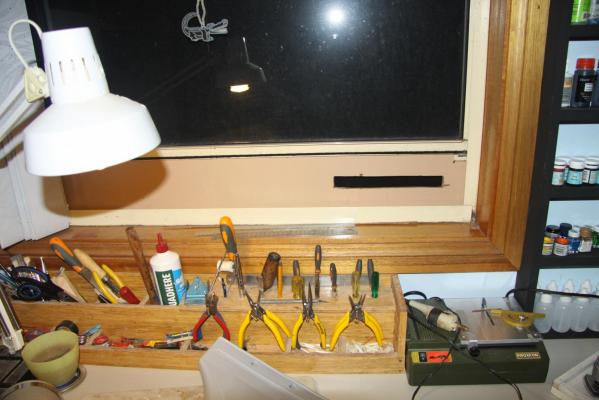
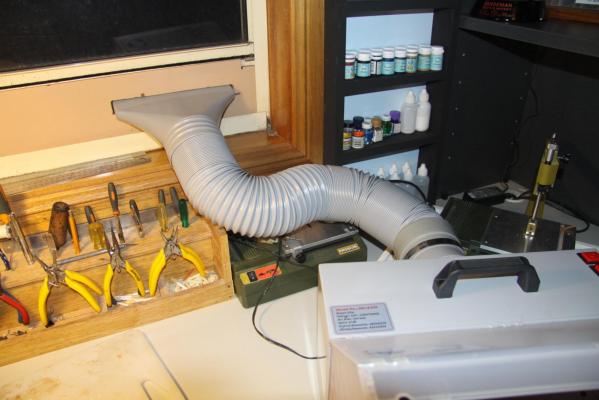
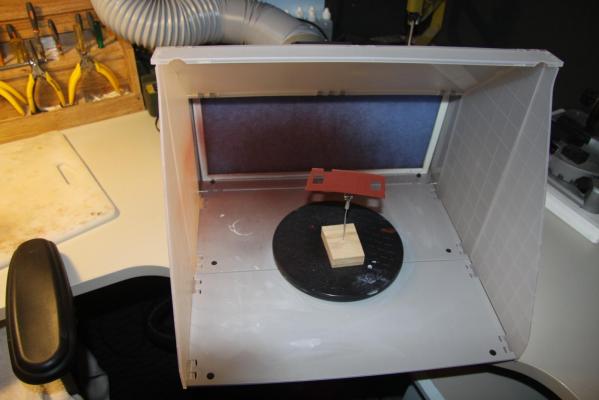

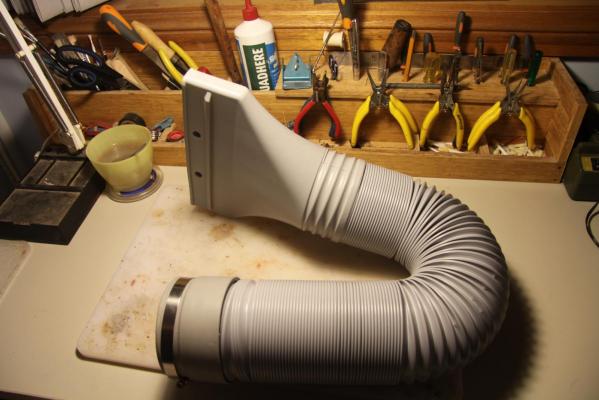
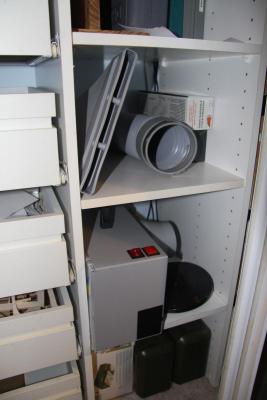
Caldercraft customer service
in Wood ship model kits
Posted
.......and a customer relations course!!!!!!